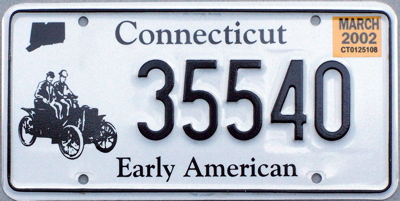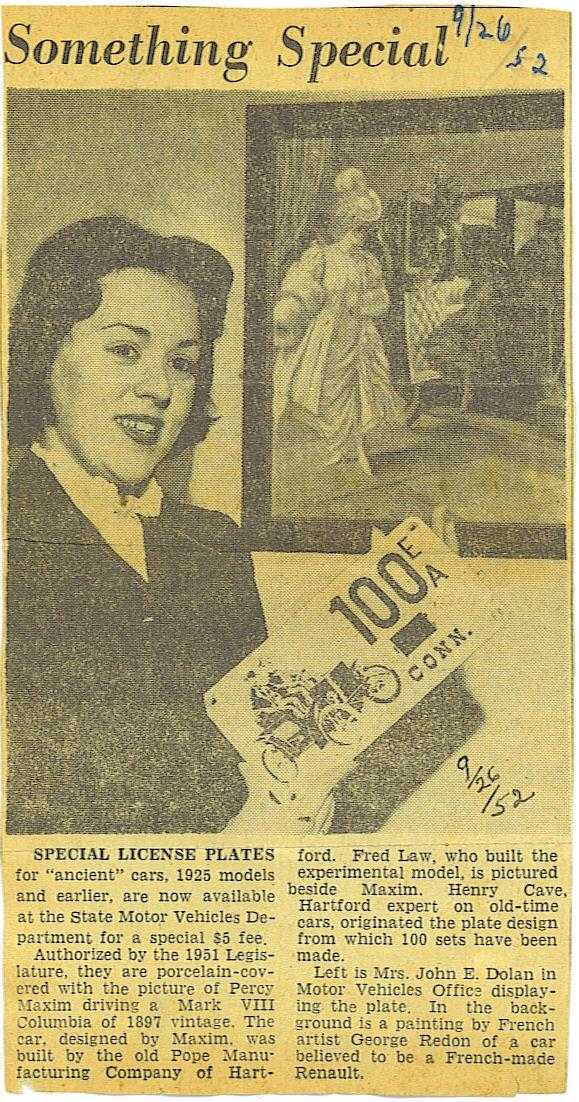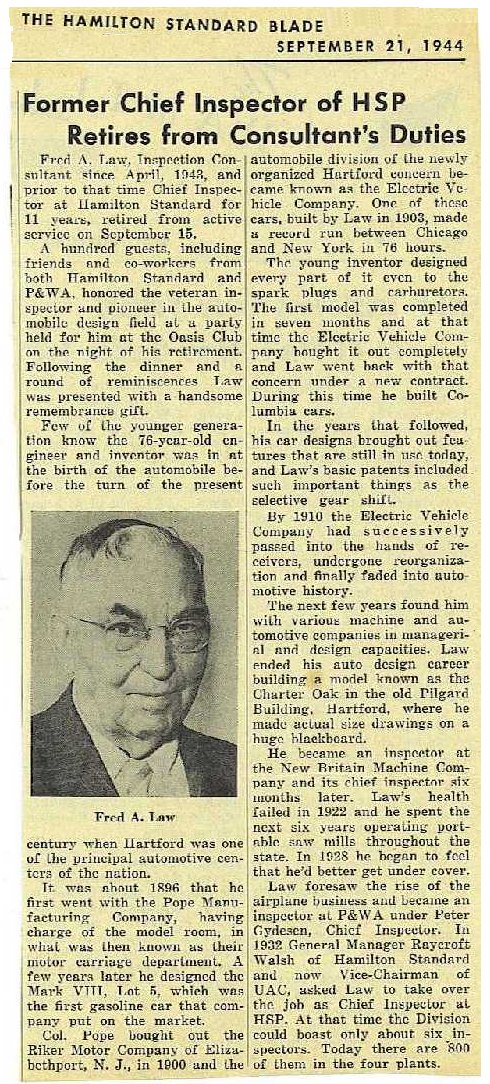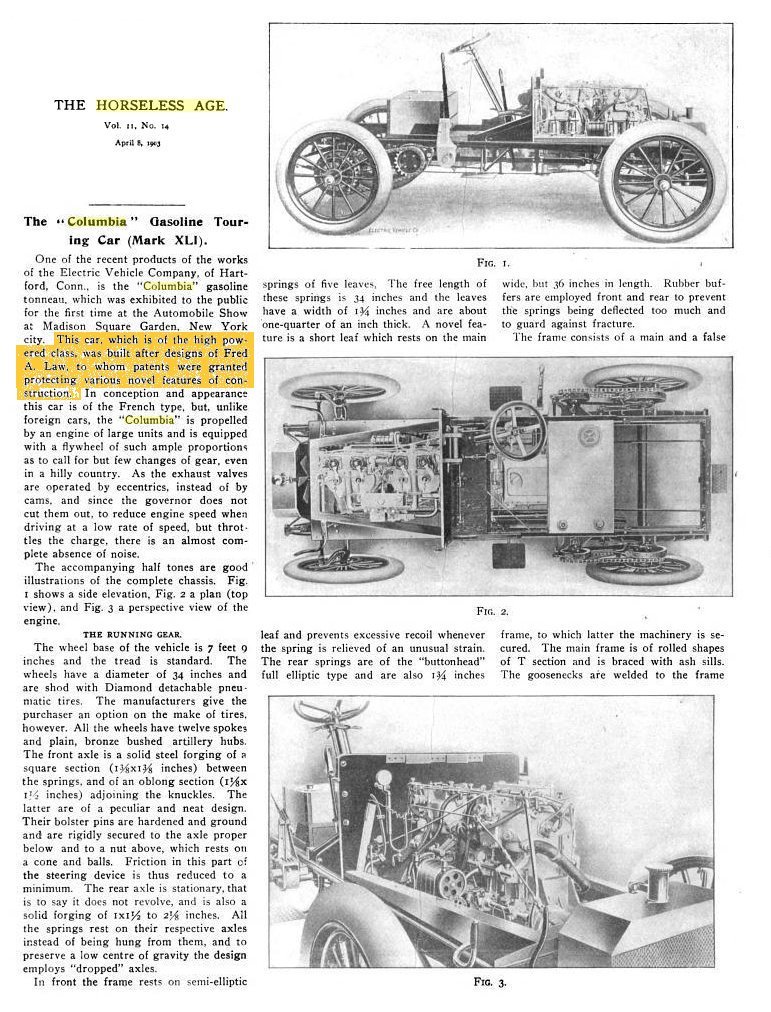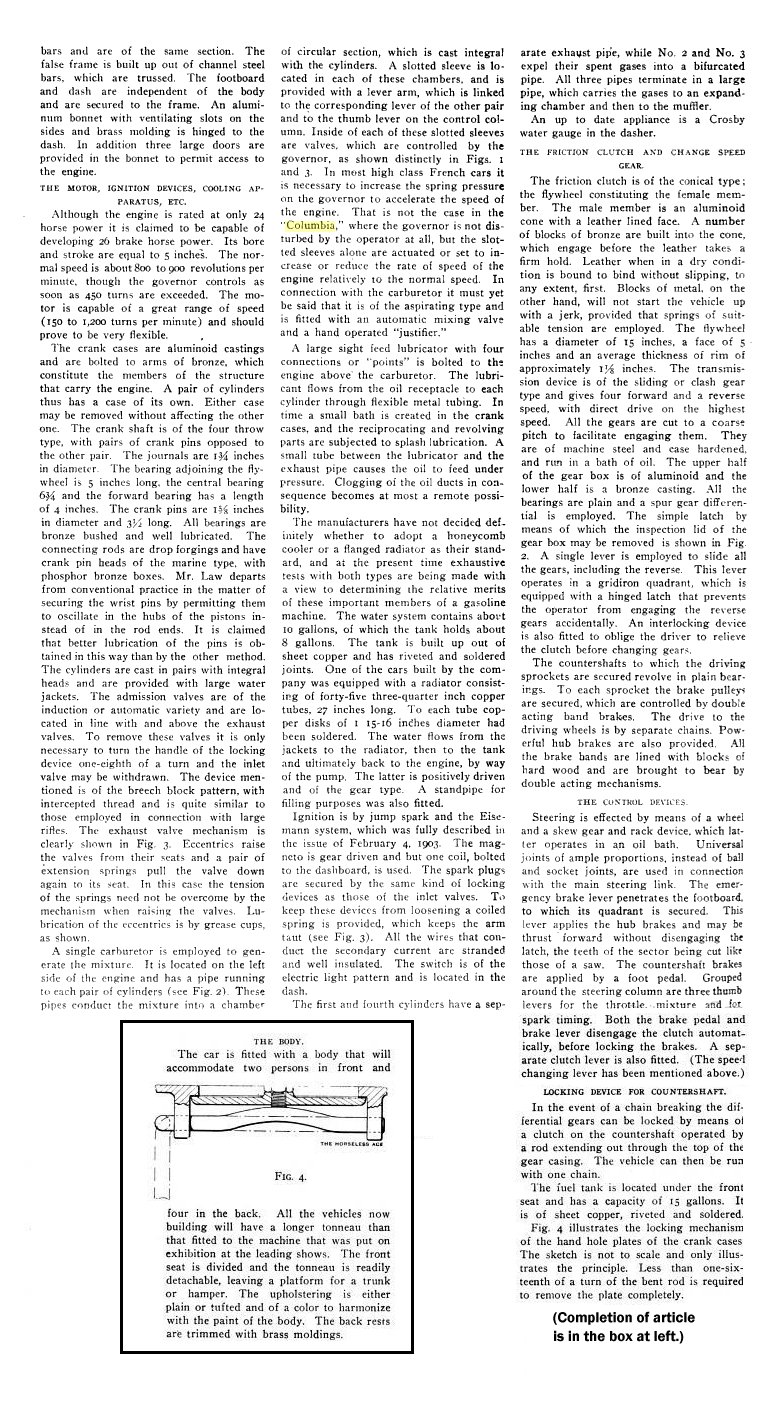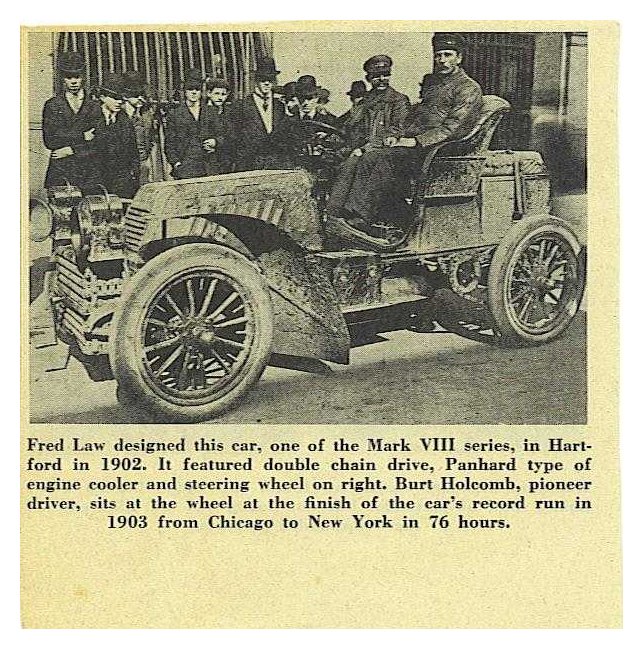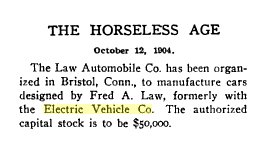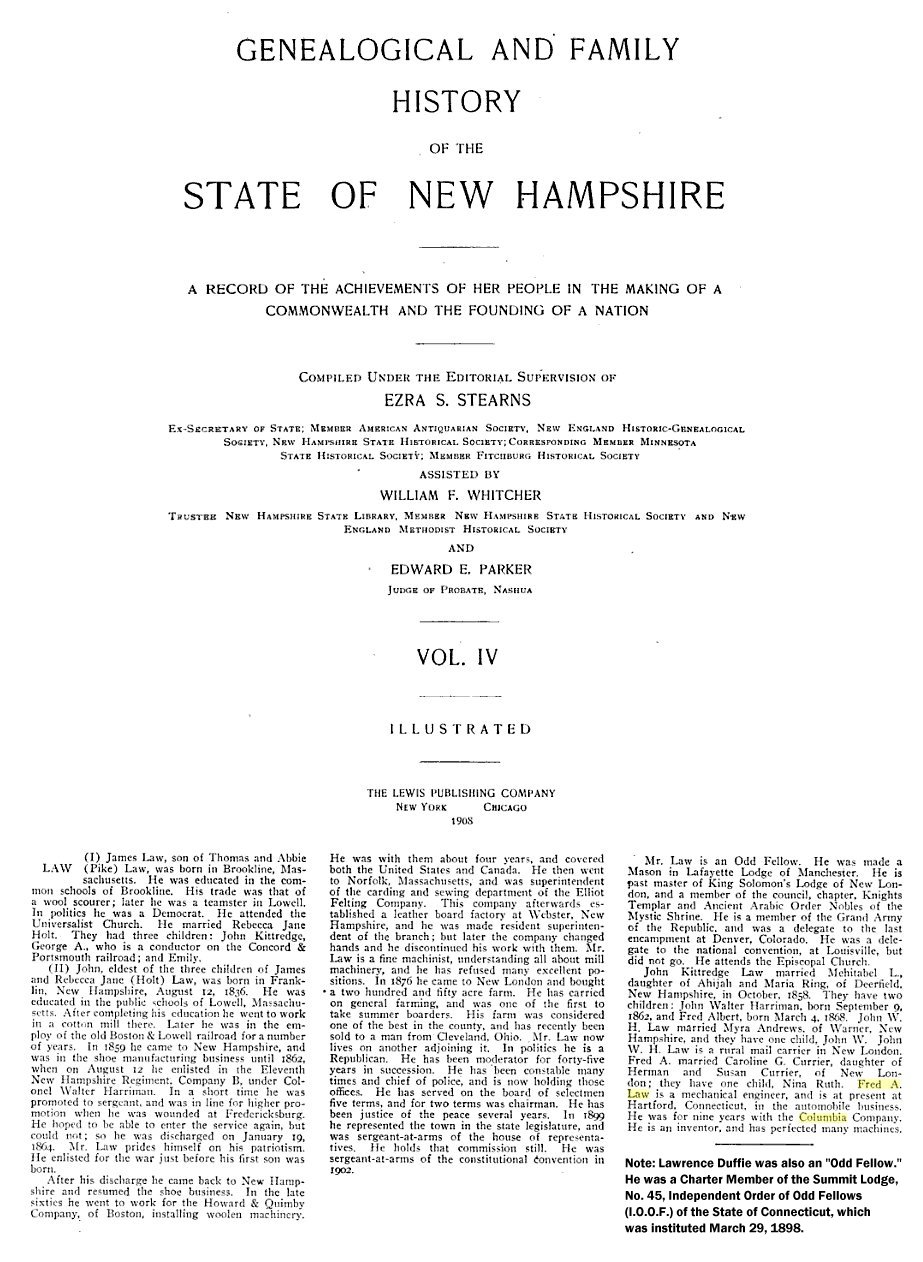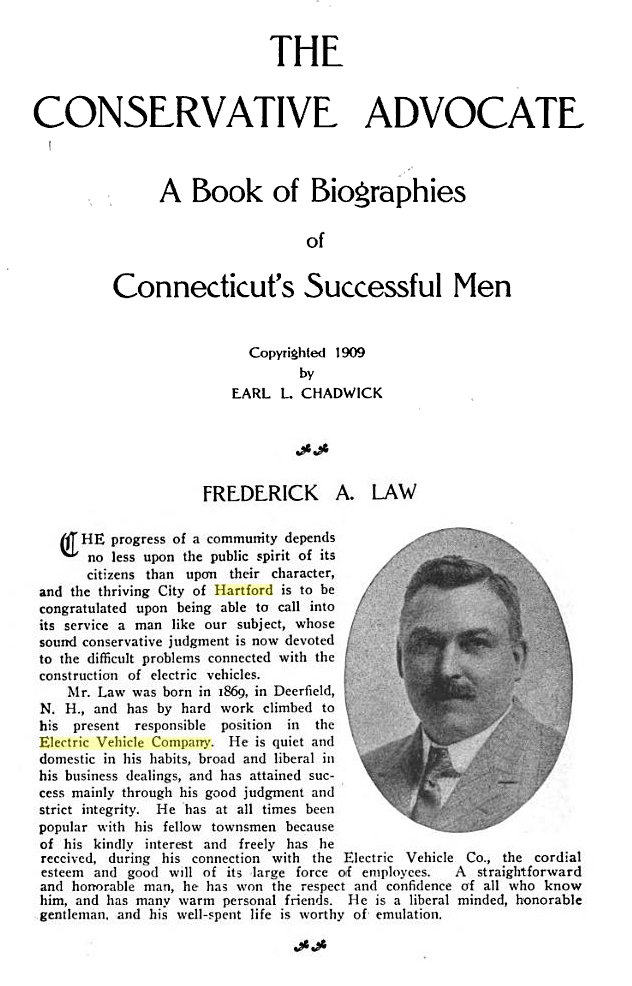EA Porcelains – The official Early American marker
program
started in late-September 1952 when the DMV began issuing plates in
pairs to owners of qualifying vehicles. These markers were black
on
white porcelain with a steel base and were once again designed by Henry
Cave. The Cooper Oven Thermometer Co. in Bristol produced them
for the
DMV. The markers were 6” by 11” in size with mounting holes
fitted
with aluminum grommets in each corner to protect the porcelain
coating. Depicted on the left side of the marker was an 1897
Columbia
automobile that was produced by the Pope Automobile Co. It was
one of
the earliest self-propelled vehicles to utilize a steering wheel
instead of a tiller. The driver is Hiram Maxim who was the Chief
Engineer of the Pope Co. at the time and his passenger is believed to
be Albert Pope, the company president.
There were
1500 pairs of these markers produced for the state beginning at number
100 and running consecutively through 1599. The number 100 pair
was
retained by the DMV so the general issue started at number 101.
These
EA markers and all of the type since then expire at the end of March in
any given year. The highest numbers in this porcelain series were
issued late in 1961 with March 1963 expirations.
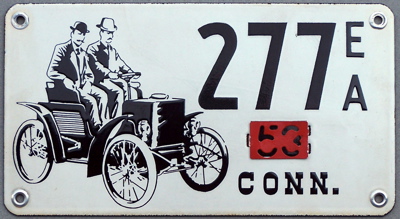
EA Flat Markers – The DMV replaced the porcelain
plates with
a new series of flat aluminum 6” by 12” markers starting with number
1600 and ending at 7999 that lasted into 1988. They continued the
color scheme of black letters, numbers and vehicle depictions on a
white background. All of the black painted devices were applied
with a
stencil system with the vehicle now reduced in size from the porcelain
style. The type face, size and placement of the letters and numbers was
changed several times during the life of this series and it seems as
though each batch produced was distinctively different from the
previous ones.
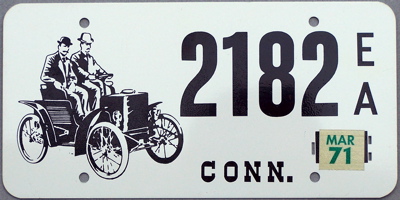
EA Embossed Markers – Starting in 1988 the DMV
replaced
the flat markers with a new black on white style featuring embossed
borders and numbers. The abbreviated name of the state, EA
designation
and vehicle depiction continued to be screen painted onto the marker
surface. This series started with number 8000 and continued to
33,999
though some of the highest numbers were not issued when the series
ended in late 1999. To accommodate the use of five digit numbers
over
10,000 the illustration of the vehicle was reduced in size.
Vanity markers with up to five letters/numbers became
available with this series and all numbers below 101 were also issued.
EA Reflective Markers – In conjunction with the
general
marker replacement program that began in 2000 the DMV started a new
series of embossed black on off-white aluminum reflective EA plates.
The use of the logo EA was discontinued and replaced with “Early
American” on the bottom of the marker. Connecticut, now spelled
out
completely for the first time since the EA program began in 1952, was
centered on the top of the marker. Also pre-printed on the
plastic
reflective sheeting was the state map on the upper left and picture of
the antique car. Once again, as in each EA redesign since the
inception of the program in 1952, the vehicle was reduced in
size.
This series started with the number 34,000 for new registrations.
